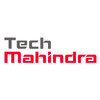Filter interviews by
CAMS Kra Senior SAP APO Consultant Interview Questions and Answers
CAMS Kra Senior SAP APO Consultant Interview Experiences
1 interview found
I applied via campus placement at Thiruthangal Nadar College for Men, Chennai and was interviewed in Jul 2022. There was 1 interview round.
(1 Question)
- Q1. Tell about your self, tell about our company,tell about your past college achievements
Interview Preparation Tips
Top trending discussions






Interview questions from similar companies

Senior SAP APO Consultant Interview Questions & Answers
LTIMindtreeposted on 20 Jun 2024
(2 Questions)
- Q1. Optimiger contrainz setup
- Q2. Lenear and descrete difference
- Ans.
Linear and discrete are two different types of data sets. Linear data is continuous while discrete data is distinct and separate.
Linear data is continuous and can take any value within a range (e.g. temperature, weight)
Discrete data is distinct and separate, often counted in whole numbers (e.g. number of students in a class, number of cars in a parking lot)
(2 Questions)
- Q1. How do u help org
- Q2. What r u r goals
Interview Preparation Tips


(3 Questions)
- Q1. SAP APO GATP and SNP
- Q2. What is APO AGATP?
- Ans.
APO AGATP stands for Advanced Global Available-to-Promise. It is a tool in SAP APO that helps in real-time ATP checks across the supply chain.
APO AGATP is a tool in SAP APO that helps in real-time ATP checks across the supply chain.
It provides a global view of available-to-promise quantities and delivery dates.
It considers various constraints like production capacity, transportation lead times, and material availabilit...
- Q3. What is APO SNP
- Ans.
APO SNP is a module in SAP APO that deals with supply network planning.
APO SNP helps in creating feasible production and procurement plans.
It considers demand, supply, and capacity constraints to optimize the supply chain.
It also helps in identifying potential bottlenecks and suggests alternative solutions.
APO SNP can be integrated with other SAP modules like PP, MM, and SD.
Examples of APO SNP functionalities include d...

(2 Questions)
- Q1. Studies background
- Q2. Prehoius job experiance
(2 Questions)
- Q1. Compatiblity with work
- Ans.
I prioritize work compatibility by aligning my skills and values with the organization's goals.
I ensure my work style and communication methods align with the team's dynamics.
I adapt to the company's culture and values to enhance collaboration and productivity.
I seek feedback and make adjustments to improve my performance and fit within the organization.
I prioritize work-life balance to maintain productivity and well-b...
- Q2. Perfect in skills
(2 Questions)
- Q1. Full day working flexiblity
- Q2. Distance from home
- Ans.
The distance from home is a key factor to consider when evaluating a job opportunity.
Consider the commute time and transportation options available
Think about the impact on work-life balance and personal well-being
Evaluate the potential cost of commuting and the convenience of the location
Interview Preparation Tips

I applied via LinkedIn and was interviewed in Dec 2024. There was 1 interview round.
(10 Questions)
- Q1. Tell me about yourself
- Q2. Write program to check string is palindrom
- Q3. Write programm to Remove number from array who occur more than once
- Q4. String Buffer vs String Builder
- Q5. If String s="Deloitte"; and String s2=new String("Deloitte"); what will be s1.equals(s2) and if(s1==s2)
- Q6. Why spring boot is better than spring ? Annotations of spring
- Q7. Query for count employee in each department
- Q8. How to create react app ? npm commands to create react app
- Q9. How routing works in react
- Q10. Dml dcl and ddl command
Interview Preparation Tips

I applied via Company Website and was interviewed in Sep 2024. There was 1 interview round.
(29 Questions)
- Q1. What should be considered during performance analysis with ST03 transaction, Total time or average time ?
- Ans.
Average time should be considered during performance analysis with ST03 transaction.
Average time gives a more accurate representation of overall performance compared to total time.
Total time can be skewed by outliers or extreme values, while average time provides a more balanced view.
For example, if there are a few long-running processes that significantly impact total time, focusing on average time can help identify o
- Q2. How to minimize the downtime during an SAP upgrade with SUM?
- Ans.
Minimize downtime during SAP upgrade with SUM by using parallel processing, proper planning, and testing.
Utilize parallel processing to speed up the upgrade process
Properly plan and schedule the upgrade during off-peak hours to minimize impact on users
Perform thorough testing in a non-production environment before the actual upgrade
Use SAP EarlyWatch Alert to identify potential issues before the upgrade
Implement SAP Sy...
- Q3. Where are R3trans and R3load processes are used during SAP upgrade using SUM?
- Ans.
R3trans and R3load processes are used during SAP upgrade using SUM for data migration and transport.
R3trans is used for transporting data between systems during the upgrade process.
R3load is used for loading data into the upgraded system.
R3trans and R3load are part of the Software Update Manager (SUM) tool used for SAP upgrades.
- Q4. What are the differences in SUM 1.0 and SUM 2.0 ? Why can we not use SUM 2.0 for SAP JAVA systems ?
- Ans.
SUM 2.0 is an updated version of SUM 1.0 with improved features. SUM 2.0 cannot be used for SAP JAVA systems due to compatibility issues.
SUM 2.0 has enhanced functionalities and better performance compared to SUM 1.0
SUM 2.0 is not compatible with SAP JAVA systems because it lacks support for certain Java-specific components and processes
Using SUM 2.0 for SAP JAVA systems can lead to errors and issues during the upgrade
- Q5. What steps are needed if the maintenance planner is not green?
- Ans.
Check prerequisites, resolve issues, update software components, check system status, and re-run maintenance planner.
Check if all prerequisites are met before running maintenance planner
Resolve any issues or errors that are causing the maintenance planner to not be green
Update software components if necessary
Check the system status to ensure it is stable and running properly
Re-run the maintenance planner after addressi
- Q6. What are the difference in steps when you generate the stack.xml file from maintenance planner for Java system vs ABAP system.
- Q7. What are delta Merge in SAP HANA?
- Ans.
Delta Merge in SAP HANA is a process where data from delta storage is merged into main storage to optimize performance.
Delta merge is a process in SAP HANA where data from delta storage is merged into main storage to optimize performance.
It helps in reducing the size of delta storage and improving query performance.
Delta merge is triggered automatically by SAP HANA based on certain conditions like memory consumption or...
- Q8. What are the reasons of Delta merge not running properly and how to make them work?
- Ans.
Delta merge may not run properly due to incorrect configuration, insufficient resources, or system errors.
Check the configuration settings for delta merge to ensure they are correct
Ensure that there are enough resources (memory, CPU, disk space) available for delta merge to run smoothly
Monitor system logs for any errors or issues that may be preventing delta merge from running properly
Restart the system or the relevant...
- Q9. What are the pre-requisites of manual delta merge?
- Ans.
Pre-requisites for manual delta merge include proper system backup, sufficient disk space, and no active users.
Ensure system backup is taken before performing manual delta merge.
Make sure there is enough disk space available for the merge process.
Ensure there are no active users or critical processes running during the merge.
Check for any pending updates or patches that may interfere with the merge.
Verify that all nece...
- Q10. What is Strust transaction code? Why are there different PSEs and how are these utilized?
- Ans.
Strust is a transaction code used in SAP for managing SSL server PSEs. Different PSEs are used for different purposes.
Strust is used to manage SSL server PSEs in SAP systems
Different PSEs are used for different purposes such as encryption, authentication, etc.
Examples of PSEs include SSL server PSE, SSL client PSE, SNC PSE, etc.
- Q11. What steps are needed if a 3rd party system wants to connect with your SAP system? What specific certificates will be needed?
- Ans.
To connect a 3rd party system with SAP, steps include creating RFC destination, configuring communication user, setting up authorizations, and exchanging certificates.
Create RFC destination in SAP system
Configure communication user in SAP system
Set up necessary authorizations for the RFC user
Exchange certificates between the 3rd party system and SAP system
- Q12. What are trusted RFC connections and why are these needed and how to create those?
- Ans.
Trusted RFC connections are secure connections between SAP systems for communication.
Trusted RFC connections are used to establish secure communication between SAP systems.
These connections are needed to ensure data integrity and confidentiality during data exchange.
To create trusted RFC connections, you need to configure the RFC destination in both sending and receiving systems.
You also need to maintain the trusted re...
- Q13. Is it possible to automate the TR movement from DEV to QA? If yes, how?
- Ans.
Yes, it is possible to automate TR movement from DEV to QA.
Use transport management system (TMS) in SAP to automate TR movement
Set up transport routes and configure TMS to automatically release and import transports
Schedule background jobs to move transports at specific times
Use transport of copies (TOC) functionality to copy transports between systems
- Q14. What are label printers? How are these different than usual printers?
- Ans.
Label printers are specialized printers used to print labels for various purposes.
Label printers are designed specifically for printing labels, tags, and stickers.
They are commonly used in industries like manufacturing, retail, logistics, and healthcare.
Label printers use different types of printing technologies such as direct thermal or thermal transfer.
Unlike usual printers, label printers are more durable and can ha...
- Q15. Spool request is successful but still the prints are not coming through, what could be the reason and how to solve it?
- Q16. There is performance issue between 1 to 2 PM everyday, what could be the reason and how to resolve it?
- Ans.
Possible reasons for performance issue between 1 to 2 PM everyday and how to resolve it
Check for any scheduled jobs or backups running during that time causing high system load
Monitor system resources like CPU, memory, and disk usage during that time
Review system logs for any errors or warnings occurring at that specific time
Consider implementing performance tuning measures such as optimizing database queries or increa...
- Q17. What are different tcodes for traces? What specific information you look for in these tcodes (e.g. STAD) ?
- Ans.
Different tcodes for traces in SAP BASIS and specific information to look for in STAD
ST01 - System Trace: Monitor user activities and authorization checks
ST05 - Performance Trace: Analyze performance issues
ST11 - Display Developer Traces: View developer traces for debugging
ST12 - SAP System Trace Configuration: Configure trace settings
ST22 - ABAP Dump Analysis: Check for ABAP dumps and errors
- Q18. How does TMS work in SAP HANA? Similarly how it works in SAP JAVA and why it is used?
- Ans.
TMS in SAP HANA manages transport requests for system changes, similar to SAP JAVA. It ensures controlled deployment of changes.
TMS in SAP HANA is used to manage transport requests for system changes, ensuring controlled deployment.
It allows for organizing changes into packages, moving them between systems, and tracking changes.
TMS in SAP JAVA also serves a similar purpose, managing transport requests for Java-based sy...
- Q19. What are domain link is SAP ?
- Ans.
Domain link in SAP is a logical link between a domain and a data element.
Domain link is used to assign a domain to a data element in SAP.
It helps in defining the characteristics and constraints of the data element.
Domain link ensures consistency and reusability of domain definitions.
Example: Linking a domain 'Material Number' to a data element 'MATNR' in SAP.
- Q20. Can we add another transport layer between QA and Prod systems?
- Ans.
Yes, it is possible to add another transport layer between QA and Prod systems.
Yes, you can add an additional transport layer between QA and Prod systems in SAP by creating a new transport route.
This can be achieved by configuring a new transport layer in the landscape configuration.
The new transport layer can be used to control the flow of transports between QA and Prod systems separately.
This setup allows for better ...
- Q21. What is the maximum memory a single HANA node can have?
- Ans.
A single HANA node can have a maximum memory of 24 TB.
A single HANA node can have a maximum memory of 24 TB.
The memory capacity of a HANA node can vary depending on the hardware configuration.
For example, a HANA node with 2 TB RAM per socket can have up to 12 sockets, resulting in a total memory capacity of 24 TB.
- Q22. Can ECC on HANA have scaleout scenario?
- Ans.
Yes, ECC on HANA can have scaleout scenario.
ECC on HANA can be scaled out by adding additional application servers to distribute workload.
Scaleout scenario helps in improving performance and handling increased workload.
It allows for horizontal scaling by adding more servers to the existing landscape.
Example: Adding more application servers to an ECC on HANA system to handle increased user load.
- Q23. What are the different strategies of SAP SUM?
- Ans.
SAP Software Update Manager (SUM) offers various strategies for system updates and upgrades.
Downtime-minimized strategy: Reduces system downtime during updates by performing most of the activities online.
Standard strategy: Follows the traditional update process with downtime for the system.
Maintenance planner strategy: Uses SAP Maintenance Planner tool to plan updates and upgrades.
Stack XML strategy: Allows importing s...
- Q24. How does sizing of SAP and HANA work?
- Ans.
Sizing of SAP and HANA involves determining the hardware requirements based on the workload and usage patterns.
Sizing involves analyzing the current and future workload of the SAP system.
Factors such as number of users, transactions, data volume, and growth projections are considered.
Tools like SAP Quick Sizer and SAP HANA Sizing reports are used to estimate hardware requirements.
Proper sizing ensures optimal performan
- Q25. How much memory is needed for a HANA system with 1TB of database?
- Ans.
Approximately 1.5 TB of memory is needed for a HANA system with 1TB of database.
HANA systems typically require 1.5 times the size of the database in memory for optimal performance
In this case, with a 1TB database, approximately 1.5 TB of memory would be needed
Memory requirements may vary based on specific configurations and usage patterns
- Q26. What are the differences between HANA Cockpit and HANA studio?
- Ans.
HANA Cockpit is a web-based tool for administration and monitoring, while HANA Studio is a desktop application for development and modeling.
HANA Cockpit is web-based, accessible via a browser, while HANA Studio is a desktop application.
HANA Cockpit is used for administration, monitoring, and performance tuning, while HANA Studio is used for development, modeling, and data provisioning.
HANA Cockpit provides a centralize...
- Q27. In SAP HANA, instead of creating one big file of 1 TB for backup, is it possible to created 10 files of 100 GB each ?
- Ans.
Yes, in SAP HANA it is possible to create multiple files for backup instead of one big file.
Yes, in SAP HANA, you can split the backup into multiple files for easier management and storage.
This can be achieved by specifying the number of backup files and their sizes during the backup process.
For example, you can create 10 files of 100 GB each for a total backup size of 1 TB.
- Q28. What is the latest version of SAP HANA available on SAP Marketplace ?
- Ans.
SAP HANA 2.0 SPS 05 is the latest version available on SAP Marketplace.
SAP HANA 2.0 SPS 05 was released in May 2020.
It includes new features and enhancements for improved performance and usability.
Customers can download the latest version from the SAP Marketplace.
- Q29. How do we install SAP HANA license for Tenant DB? What is sequence of applying the licenses in SAP HANA?
- Ans.
To install SAP HANA license for Tenant DB, use HDBLCM tool and apply the licenses in a specific sequence.
Use HDBLCM tool to install SAP HANA license for Tenant DB
Apply the licenses in the following sequence: System DB, Tenant DB, and then XS Advanced
Ensure that the license key is valid and matches the hardware key of the system
Skills evaluated in this interview

(3 Questions)
- Q1. What is the process of the procure-to-pay (P2P) cycle?
- Ans.
The procure-to-pay (P2P) cycle is the process of obtaining goods or services from a supplier and paying for them.
1. Requisition: The process starts with creating a purchase requisition for the required goods or services.
2. Purchase Order: Once the requisition is approved, a purchase order is created and sent to the supplier.
3. Goods Receipt: Upon receiving the goods or services, a goods receipt is recorded in the syste...
- Q2. What is the process for returning a purchase order (PO)?
- Ans.
The process for returning a purchase order involves creating a return order, specifying the reason for return, and processing the return with the vendor.
Create a return order in the system
Specify the reason for return (e.g. damaged goods, incorrect quantity)
Process the return with the vendor by sending the return order and arranging for pickup or return shipment
- Q3. What are some examples of different movement types?
- Ans.
Movement types in SAP MM are used to control different goods movements in the system.
101 - Goods receipt for purchase order
261 - Goods issue for an order
601 - Goods issue for delivery
(3 Questions)
- Q1. What information can be found on a PR screen?
- Ans.
A PR screen in SAP MM contains information related to purchase requisitions.
Details of the requested material or service
Quantity needed
Delivery date required
Account assignment details
Approval status
Source of supply information
- Q2. What is your understanding of release strategy in project management?
- Ans.
Release strategy in project management involves defining criteria for approving project deliverables or changes.
Release strategy determines who has the authority to approve project deliverables or changes.
It typically involves setting up a hierarchy of approvers based on certain criteria such as cost, risk, or impact.
For example, a release strategy may require approval from a project manager for changes under $10,000, ...
- Q3. Why is the purchase info record mandatory?
- Ans.
Purchase info record is mandatory for maintaining vendor-specific purchasing data.
Maintains vendor-specific purchasing data such as pricing, delivery terms, etc.
Helps in ensuring consistency in purchasing decisions and tracking vendor performance.
Enables efficient procurement processes by providing relevant information to buyers.
Used for automatic determination of conditions during purchase order creation.

I applied via Walk-in and was interviewed in Nov 2024. There were 4 interview rounds.
(2 Questions)
- Q1. Sap bw consultant
- Ans.
Based on requirement identified data source replicated into BW and if required made some enhancements. Knowledge on customized Data Sources using ABAP CDS Views and Data
- Q2. Sap bw4hana
- Ans.
Knowledge on customized Data Sources using ABAP CDS Views and Data sources enhancements in different areas like SAP SD and FICO
(2 Questions)
- Q1. Sap abap consultant
- Ans.
Knowledge on SAP ABAP CDS Views, Extended CDS View, Applied annotations based on requirement, arithmetic functions, case statements and where conditions
- Q2. Sap abap cds
(2 Questions)
- Q1. Abap enhancement is in just basic
- Q2. S4h
About ourself and what about me
Interview Preparation Tips

I was interviewed in Jan 2025.
First, you must clear the aptitude test.
Coding will involve understanding the basics.
(2 Questions)
- Q1. Can you describe your last project?
- Q2. What are the basic concepts of Object-Oriented Programming (OOP)?
(2 Questions)
- Q1. Can you tell me about yourself?
- Q2. What makes you a suitable candidate for this position?
Interview Preparation Tips

I applied via Referral and was interviewed in Oct 2024. There were 2 interview rounds.
(2 Questions)
- Q1. Explain inter company accounting
- Ans.
Inter company accounting involves recording financial transactions between different entities within the same organization.
Inter company accounting ensures accurate financial reporting within a group of companies.
Transactions between entities are eliminated to avoid double counting.
Common inter company transactions include sales, purchases, loans, and transfers of assets.
Inter company accounts are used to track these t...
- Q2. Foreign Currency Revaluation
(2 Questions)
- Q1. Explain the process you follow for support project
- Q2. How do you manage a team
- Ans.
I manage a team by setting clear goals, providing support and resources, fostering open communication, and recognizing achievements.
Set clear goals and expectations for team members
Provide necessary support and resources for team to succeed
Foster open communication and encourage collaboration
Recognize and reward team achievements
Delegate tasks effectively based on team members' strengths and skills
Interview Preparation Tips
CAMS Kra Interview FAQs
Tell us how to improve this page.
Interview Questions for Popular Designations
- SAP APO Consultant Interview Questions
- SAP Abap Consultant Interview Questions
- SAP Fico Consultant Interview Questions
- SAP Consultant Interview Questions
- SAP MM Consultant Interview Questions
- SAP SD Consultant Interview Questions
- SAP Basis Consultant Interview Questions
- Consultant Interview Questions
- Show more
Interview Questions from Similar Companies
Fast track your campus placements
CAMS Kra Senior SAP APO Consultant Reviews and Ratings
based on 1 review
Rating in categories
|
Executive Officer
4
salaries
| ₹1.6 L/yr - ₹5 L/yr |
|
Senior Process Officer
4
salaries
| ₹2 L/yr - ₹3.8 L/yr |
|
Mutual Fund Executive
3
salaries
| ₹2 L/yr - ₹2 L/yr |

KFintech

CAMS
Cdsl Venture

Link Intime
- Home >
- Interviews >
- CAMS Kra Interview Questions >
- CAMS Kra Senior SAP APO Consultant Interview Questions









